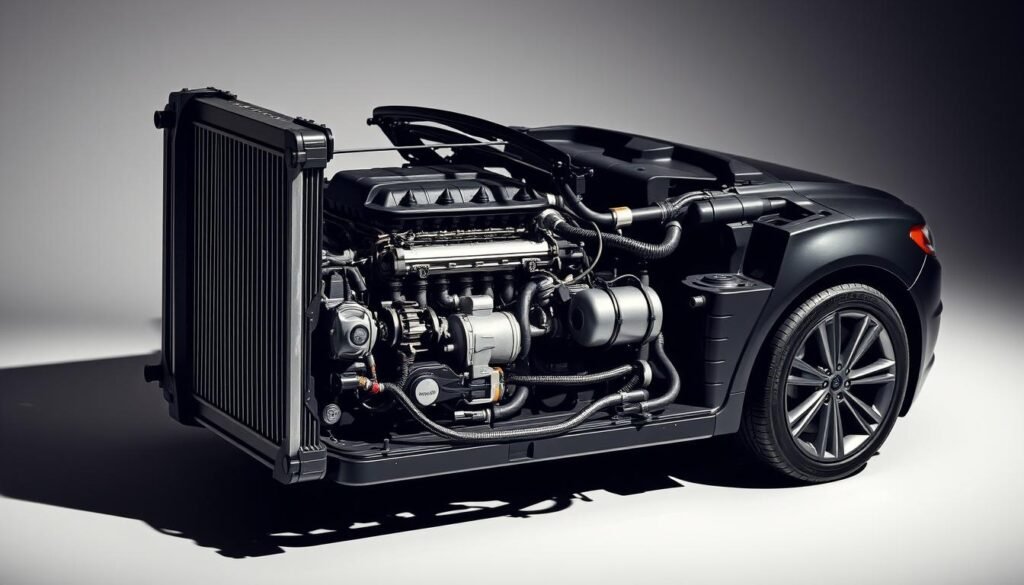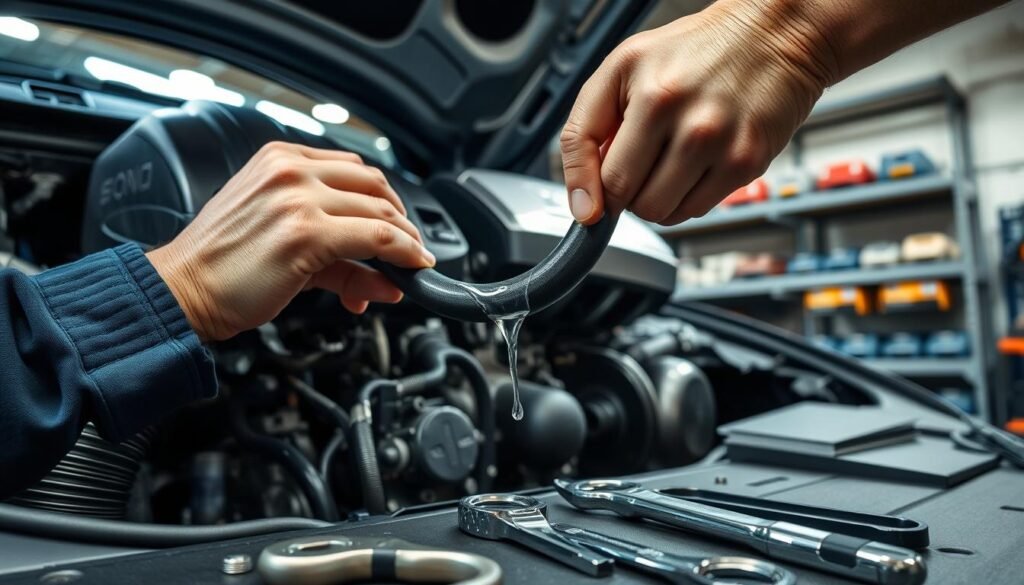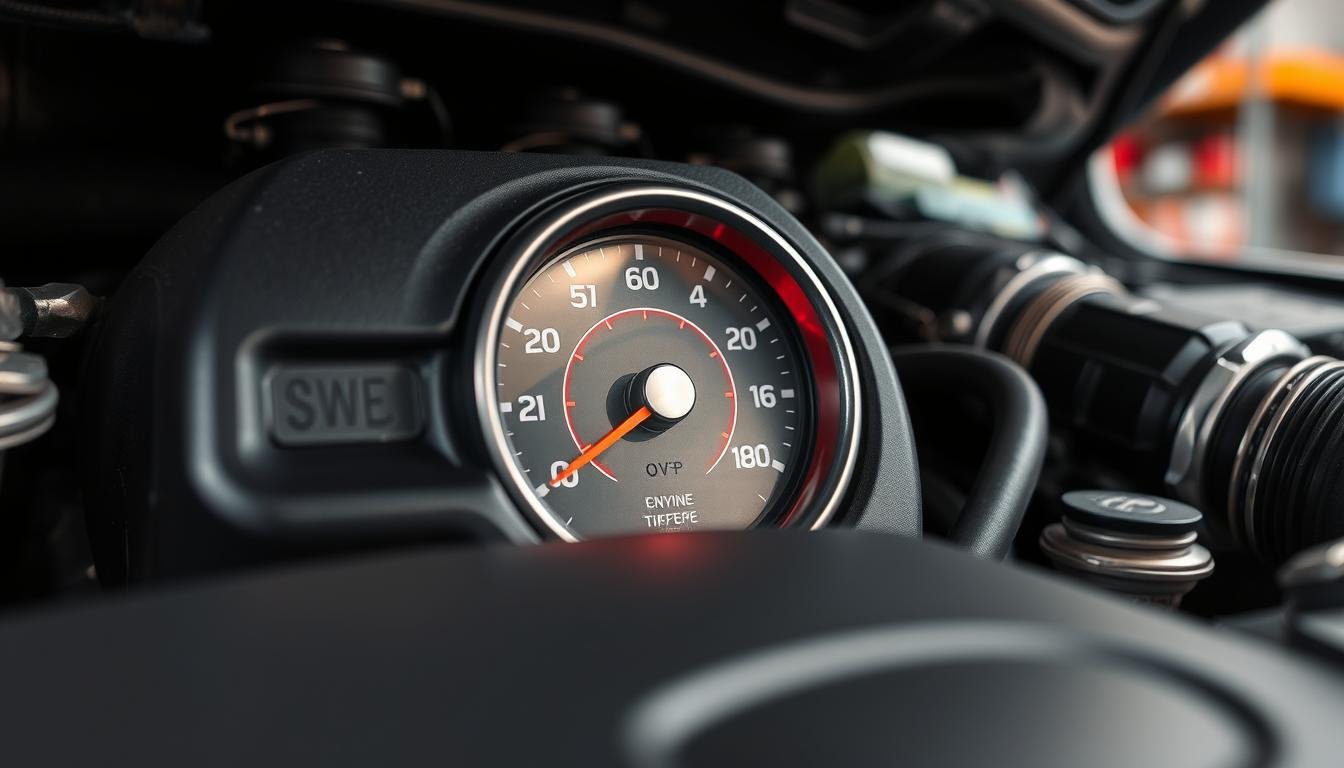How To Fix Engine Coolant Over Temperature Ford Fusion? Best 9 Idea
If your Ford Fusion’s engine coolant gets too hot, it can damage the engine. Seeing the warning light for your engine’s coolant overheating means you need to act fast.
Problems might be low coolant, a bad thermostat, or radiator issues. This guide helps you spot engine coolant issues in your Ford Fusion and fix them.
Knowing how to keep an eye on your engine’s health prevents lasting damage. You’ll learn how to check your car, troubleshoot, and fix problems here.
Follow our easy steps to take good care of your Ford Fusion’s cooling system and keep it working well.
What is Engine Overheating in Ford Fusion?
Engine overheating in a Ford Fusion can happen for many reasons. Things like driving too hard and certain mechanical issues are common causes.
A major problem you might face is overheating due to the ford fusion engine coolant overheating issue. It’s very important to know the signs of this problem to avoid damage.
Seeing the engine temperature warning light is a big sign of overheating. It means you need to act fast.
You might also see the temperature gauges acting oddly, which suggests problems with the cooling system. If not fixed, these issues could get worse.
Engines normally run between 70°C and 105°C (160°F to 221°F). Running hotter than this can ruin the engine and lead to big repair bills.
If your car starts to overheat, pull over safely and let the engine cool. This short stop can prevent further damage.
It also gives you a chance to check things like coolant levels and look for leaks.
Common Symptoms of Engine Coolant Over Temperature Issues
It’s important to know the signs of your Ford Fusion overheating to keep it running well. You might see the ford fusion coolant temperature warning light turn on your dashboard.
This means the engine coolant is either too hot or there isn’t enough of it, which is a big problem.
Other signs of overheating symptoms are steam coming out from under the hood and strange smells from the engine area.
These can mean your engine is really overheating, leading to serious issues. If your car starts losing power and it’s hard to speed up, it’s another bad sign.
Seeing any of these problems means you should act fast. Not fixing them can cause huge damages like broken gaskets or bent cylinder heads. Fixing these can cost a lot of money.

Indicators of Ford Fusion Coolant Temperature Warning
The dashboard light for coolant temperature is a key warning of overheating. Seeing this light means you need to understand what’s wrong with the Ford Fusion coolant system.
It’s a warning you shouldn’t ignore because it helps avoid more engine damage.
Apart from the dashboard warning light, keep an eye out for other coolant temperature indicators. Notice if the temperature gauge moves towards the hot area.
Seeing steam from under the hood means you need to stop and check your car. Hearing strange noises or smelling odd scents from the engine also means there could be an issue.
Stay alert to these signs. By taking early action, you can solve small problems before they turn into big and expensive repairs.

| Indicator | Significance |
|---|---|
| Dashboard Warning Light | Signals overheating; immediate attention required. |
| Temperature Gauge | Rising temperature suggests potential cooling system failure. |
| Steam Under Hood | Indicates possible coolant leak or overheating issue. |
| Unusual Noises | May signify engine strain or other underlying problems. |
| Burning Smell | Could indicate overheated engine or leaking fluids. |
Engine Coolant Over Temperature Ford Fusion: Causes and Solutions
Understanding why engine coolant gets too hot in a Ford Fusion is crucial. Knowing the reasons helps you fix issues quickly and keep your car running well.
Low Coolant Level or Coolant Leak
A common cause of overheating is not having enough coolant. It’s important to check regularly for leaks.
If you find the coolant level drops often, you might have a leak. Getting it fixed can stop the overheating, but if leaks keep happening, you’ll need to look deeper to protect your engine.
Faulty Thermostat
The thermostat controls coolant flow in your Ford Fusion. When it doesn’t work right, your car can get too hot fast. If it’s stuck shut, coolant can’t move, causing overheating.
But if it’s open, the engine might not warm up as it should. Changing the thermostat when needed keeps your engine in good shape.
Radiator Issues
Radiator troubles, like bad fans or blocked pipes, make it hard for your car to stay cool. Cleaning or flushing the radiator might fix it.
Yet, sometimes you might need to replace the radiator or fan. A bad radiator cap can also make your car overheat by dropping the system’s pressure.
Faulty Water Pump
The water pump is key for moving coolant around the engine. Problems with the water pump mean the coolant won’t flow right, leading to too much heat.
Checking this part often helps avoid big repair bills and keeps your engine running smoothly.

Importance of Regular Cooling System Maintenance
Keeping your Ford Fusion in top shape means regularly checking the cooling system. The right coolant level keeps the engine cool, makes it last longer, and boosts its performance.
Checking the coolant helps your engine run well. If the coolant is low, it could mean there’s a problem that needs quick fixing.
Checking Coolant Levels
To ensure your car runs smoothly, check the coolant regularly. Here’s how:
- Find the coolant reservoir under the hood.
- Look for the min and max marks on it.
- Add the right type of coolant if needed for your Ford Fusion.
Keeping an eye on the coolant can help you spot leaks or evaporation early. This early detection can prevent bigger, more expensive problems later.
Identifying Coolant Leaks
Spotting coolant leaks early is key to a healthy Ford Fusion engine. Check these places often to catch leaks:
- Hoses – Look for any cracks or wet spots.
- Radiator – Look for rust or puddles underneath.
- Connections – Make sure everything is tight and secure.
Regular checks can keep your car running longer and save money on repairs.

Immediate Actions When Engine Overheating Occurs
When your Ford Fusion starts overheating, how you react is key to preventing more damage. As soon as you see a coolant temperature warning, slow down and look for a safe place to stop.
After pulling over, don’t hurry to open the hood or coolant reservoir. This could let out steam that might burn you. Wait for the engine to cool before doing anything else.
If everything seems okay and the engine has cooled, you might drive to a repair shop. But if driving seems unsafe, better call a tow truck. This prevents making things worse.
Always think of your and your passengers’ safety first. Taking these steps is crucial in handling a Ford Fusion overheating properly.
Ford Fusion Overheating Troubleshooting Techniques
Knowing how to deal with your Ford Fusion overheating is key. Acting quickly can prevent bigger issues.
Use two main methods: turn on the heat inside and keep an eye on the engine’s temperature gauge.
Turning on The Interior Heater
Turning on the heater can help cool the engine when it’s too hot. It moves heat away from the engine, helping it to cool. It’s a quick fix as you find somewhere safe to pull over.
Monitoring Engine Temperature Gauge
It’s vital to watch the engine temperature gauge. Look at it often when you’re driving, especially if your car starts to overheat.
If the needle moves towards “H”, your engine is too hot. You need to act fast to stop damage.
Repairing Ford Fusion Coolant System Issues
Keeping your Ford Fusion’s coolant system in check is key to stop overheating. We’ll look at how to flush coolant, replace the thermostat, and fix the radiator.
Doing these things helps keep your engine running cool and smooth.
How To Perform A Coolant Flush?
A coolant flush helps keep your cooling system running well. Here’s what to do:
- Gather what you need: a drain pan, new coolant, and a funnel.
- Warm up the coolant by running the engine briefly.
- Turn off the engine and let it cool down.
- Find the radiator’s drain valve and let the old coolant flow out.
- Shut the valve and pour in new coolant with the funnel.
- Keep the engine running without the radiator cap until air bubbles stop.
- Put the radiator cap back on tight.
Replacing The Thermostat
A bad thermostat can cause overheating. If that’s the problem, you’ll need to replace it. Just follow these steps:
- Empty the radiator of coolant.
- Take off the thermostat housing to get to the thermostat.
- Remove the old thermostat and put a new one in its place.
- Put the housing back and make sure it’s tight.
- Fill the system with coolant and check for air pockets.
Repairing or Replacing The Radiator
Checking your radiator regularly helps you know if it needs fixing or replacing. To fix it, start here:
- Use a special cleaner or a hose to clean it.
- Search for any cracks and leaks. Minor ones can usually be fixed with sealant.
- For serious damage, a new radiator might be needed.
When To Seek Professional Help?
Knowing when to get professional help for your Ford Fusion is key. If it keeps overheating, even after you try to fix it, there might be a big problem.
You should watch out for certain signs that show you need an expert. Catching these signs early can save you time and money.
Identifying Serious Problems
Look for these signs of major engine problems:
- Persistent coolant leaks
- Visible steam or smoke from under the hood
- Significant loss of engine power or performance
- Unusual noises coming from the engine compartment
These signs mean you might have serious engine issues. It’s important to catch them for your car’s safety.
Using Diagnostic Tools
When you can’t figure out the issue, it’s crucial to use diagnostic tools. These tools help check the engine and cooling system.
They find hidden issues so you can fix them the right way. Main uses of these tools include:
- Monitoring engine temperature performance
- Assessing the efficiency of the cooling system
- Detecting error codes related to overheating
With these advanced tools, you can understand the problem better. This helps you repair your car more accurately.
Conclusion
It’s critical to manage the engine coolant’s temperature in your Ford Fusion for its longevity and safety.
Knowing the symptoms and carrying out regular maintenance can fix coolant temperature problems. It also helps catch issues before they get worse.
Keeping an eye on the coolant levels and spotting leaks are important steps in keeping your car running well.
This guide on Ford Fusion coolant solutions shows how crucial quick action and preventive care are.
By staying ahead, your drive remains smooth and free of troubles. Remember, taking good care of your cooling system helps maintain your vehicle’s health and reliability.
Your car is a big investment, treat it well. Knowing when to get expert help is essential too. Using diagnostic tools or talking to a professional can stop bigger problems.
This way, you can drive without worrying. With the correct approach, dealing with coolant temperature issues in your Ford Fusion becomes manageable.
FAQs
Q: What should I do if my Ford Fusion engine coolant warning light comes on?
A: When the warning light shows, slow down and find a safe place to stop. Let the engine cool. Then, check the coolant levels and look for leaks.
Q: What causes the engine to overheat in a Ford Fusion?
A: Low coolant, a bad thermostat, radiator problems, and a broken water pump can cause issues. Any of these might make your car overheat.
Q: How can I tell if my coolant level is low?
A: Look at the coolant reservoir to see the level. If it’s under the minimum mark, this could be why it’s overheating.
Q: What are the risks of ignoring engine coolant overheating?
A: If you ignore overheating, the damage could be huge. You might have to deal with blown gaskets or a ruined engine. Getting it checked on time is vital.
Q: How can I prevent coolant leaks in my Ford Fusion?
A: Check hoses, connections, and the radiator often. Fix any wear or damage quickly to keep the system working right.
Q: What is a coolant flush, and how often should it be done?
A: A coolant flush replaces old coolant with new. You should do this every two years or follow your car manual’s advice.
Q: When should I consider seeking professional help for my Ford Fusion’s overheating issues?
A: If overheating keeps up, you see leaks, steam, or the car runs poorly, get help. These signs mean you might have a serious problem.
Q: Can driving aggressively contribute to engine overheating?
A: Yes, driving hard can push your engine too much. This is even worse if your cooling system isn’t working right.







